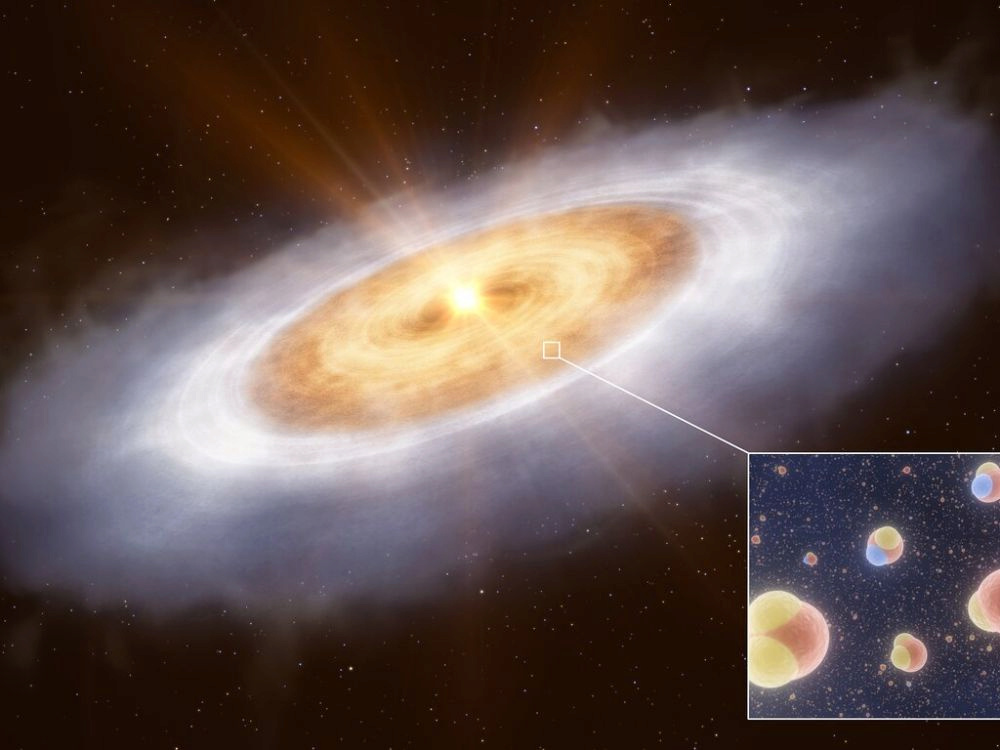Earth's water is probably older than the Sun

artist's rendering of the v883 orionis protoplanetary disc with water molecules in the gas phase.
Where does Earth's water come from? This old scientific question is not clearly settled, even if the potential sources are known: asteroids , comets or even the Sun could have contributed to the supply of water. Unless this one was already present in the blocks of rocks which aggregated to form the planet? The controversy still has a bright future ahead of it, but a new study indicates that whatever its origin, Earth's water is undoubtedly older than the Sun itself!
The identification and analysis of water in the gaseous phase in a protoplanetary disk provides information on the origins of this precious liquid in the solar system.
A hot protoplanetary disk
The research conducted by John J. Tobin of the National Radio Astronomy Observatory of the United States does not focus on the solar system but on V883 Orionis, a proto-planetary disk located about 1300 light years from the Sun. These ephemeral structures, whose lifespan does not exceed ten million years (it is very short compared to the billions of years of existence of a star) and which one finds around the very young stars which just ignited, are the crucible in which the future planets and the other small bodies which will form the stellar systems are aggregated. To probe them, astronomers have different instruments such as SPHEREinstalled on one of the four telescopes of the VLT or the ALMA radio telescope whose large antennas are arranged in the Atacama desert, in Chile. It is the latter that was used for this study which is the subject of a publication in the journal Nature .
Astronomers have focused on water, which is mostly present as ice in protoplanetary disks, at least what our telescopes can see. But the disc of V883 Orionis is particularly hot so that " the water is no longer in the form of ice, but of gas, which allows us to detect it ", explains, in a press release, John Tobin. Thanks to ALMA, his team was able to detect the water, map its distribution in the disc and determine its composition.
Semi-heavy water like on comets
Water usually consists of one oxygen atom and two hydrogen atoms. Sometimes, one (or two) atom(s) of hydrogen can be replaced by an atom of deuterium, a heavy isotope of hydrogen, which gives "semi-heavy" water and "heavy" water. when two deuterium atoms replace hydrogen. The analysis of these different varieties of water, which do not form under the same conditions, can be instructive. Thus, the researchers found that " the composition of the water in the disk is very similar to that of comets in our own solar system. This supports the idea that water formed billions of years ago. years, before the Sun, in interstellar space, and that", explains John Tobin. However, these results, which need to be verified with the study of other discs that will be accessible with ESO's future Extremely Large Telescope , do not allow us to decide on the origin of the terrestrial water.
Source : websites

